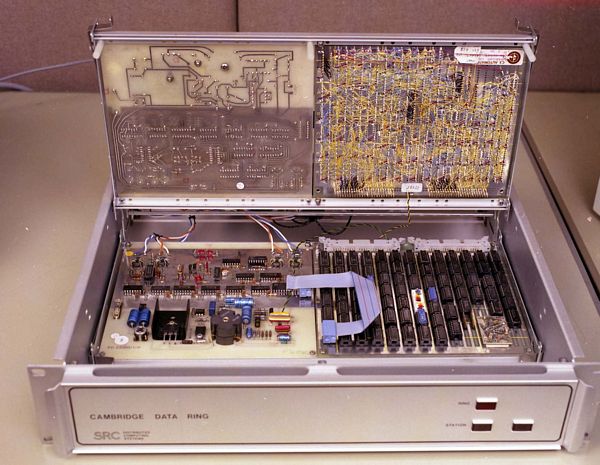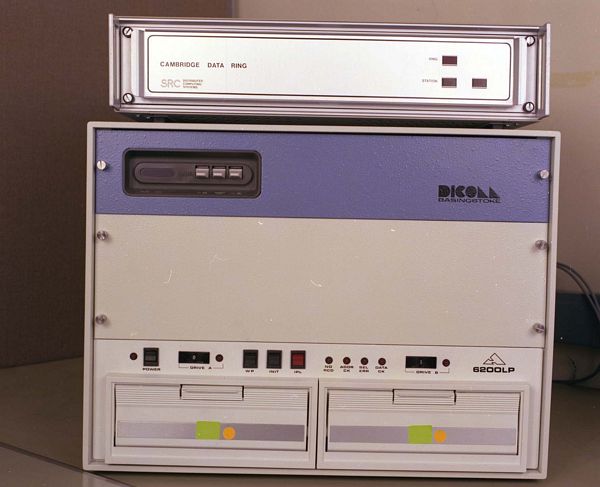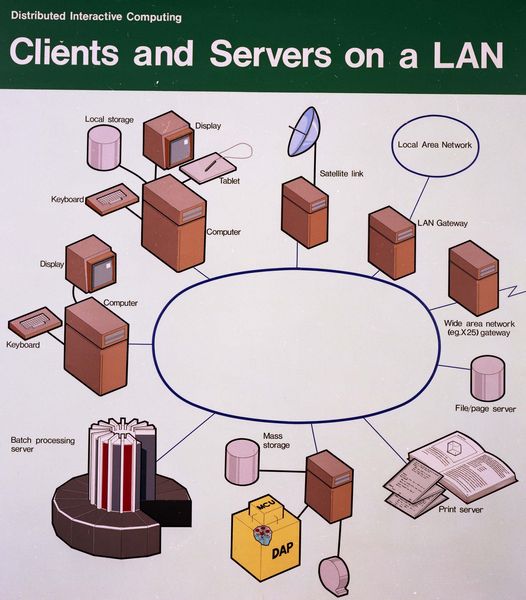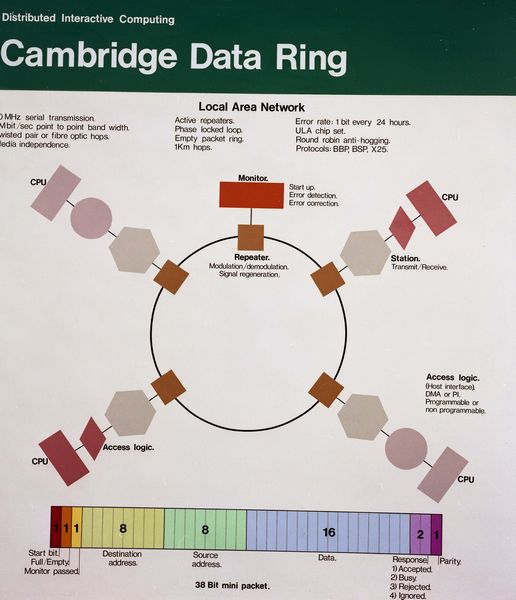

The Common Base communications for Single Users was agreed as Cambridge Ring for Local Area Network connections and X25 with the JNT Coloured Books as the wide area network communications.
When the Common Base was formulated, it should be remembered that there was no standard ethernet - just many variants. On the other hand, the Cambridge Ring had been agreed as the local area network connection system by SERC's DCS programme.
In 1981, the SERC DCS Programme had agreed to use Cambridge Rings as the base local area network system for the programme. It was agreed that RAL would produce a detailed specification, build some prototype rings and then let a contract with industry for the remaining systems. The aim was to produce enough connections for about 10 rings.


The first ring produced by RAL was installed in January 1982. Logica was contracted to produce the production systems and these were the basis for the Logica Polynet product.
By May 1982, software was available on the PDP11 UNIX systems to allow communication to take place between UNIX hosts. The protocols to be used were TSBSP and BBP. The JNT were producing a Cambridge Ring to X25 gateway which would allow a set of Cambridge Rings to intercommunicate via the wide area network. Local developments at RAL on GEC systems also allowed a GEC multi user mini to act as a Cambridge Ring to X25 gateway.


The PERQ had a proprietary ethernet as the main local area network communication mechanism. A fast I/O bus on the PERQ allowed connection from the ethernet to the PERQ.
After a meeting between RAL, ICL and Logica, a decision was taken early on to base the Cambridge Ring PERQ connection on the GPIB interface on the PERQ. Alternatives were looked at but they either turned out to be expensive or difficult. The GPIB was driven by a Z80 with 1K RAM and 8K ROM and it was feasible to connect the Cambridge Ring as another peripheral. By using the GPIB, the product would be useful on other systems.
By April 1982, low level protocols were being transmitted over the ring using the GPIB at a speed of 1.1 Kbytes/sec which was really not useful in the long run. There were inefficiencies in the way the Z80 was coded and a recoded Z80 was expected quite soon. There were also plans to produce a reworked I/O Board with a Z80 with 16K RAM and 4K ROM. These improvements were believed to give the ability to drive the ring at about 1 Mbit/sec.
Nearly all the work during 1982 was based on the assumption that the target machine was ACCENT UNIX.
By the end of 1982, the Basic Block Protocol (BBP) had been written in C and was awaiting the recoded Z80 for further tests which were promised by ICL around the end of December.
The University of Kent already had a TSBSP (Transport Service Byte Stream Protocol) implementation for the VAX which resided in the kernel and it was feasible that this could be ported to the PERQ.
An asynchronous system puftp provided reliable communication from ICF multi user systems to PERQs and was extensively used. This continued to be the major communication protocol for a long while.
York University (under a contract funded by DCS and supervised by JNT) had produced the York-box, an LSI11 based front end system, which provided a connection between a UNIX system running the JNT Coloured Book Protocols and a wide area network. Although an expensive solution, it provided a means by which PERQs could be connected directly to the wide area network.
An Extra Mural Research (EMR) contract was organised with York to attach a York box to a PERQ. This was held up during 1982 awaiting a version of UNIX to attach it to.
A separate approach by the JNT was aimed at producing a Cambridge Ring to X25 gateway which could be used by a cluster of PERQs connected by a Cambridge Ring.
In April 1982, ICL decided to standardise on ethernet for all its products including PERQ. A joint announcement with Hewlett Packard, DEC, Siemens etc was planned. As a result, in the local area networking area, there was little interest by ICL in SERC developments and the necessary changes to the Z80 were treated as low priority in ICL. Brian Oakely of SERC agreed at a meeting with ICL on 6 April 1982 that SERC would add Ethernet to the local area network Common Base together with Cambridge Ring if commercial standardisation on Ethernet took place.